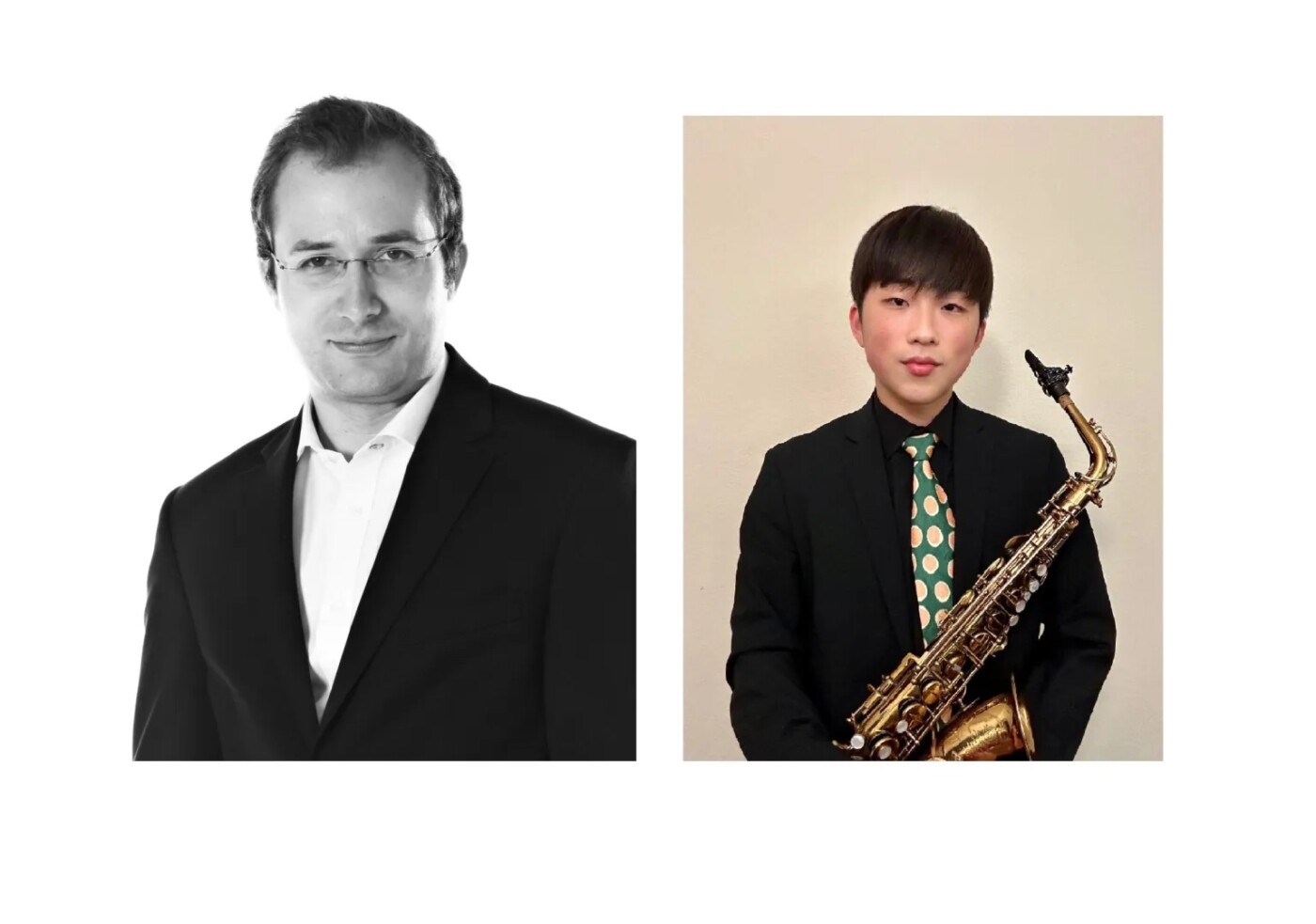The San Francisco Symphony Youth Orchestra has established a reputation for being one of the world’s most accomplished youth ensembles.
The SFSYO, which has provided preprofessional training to the Bay Area’s most talented young musicians at no cost since 1981, on Nov. 24 opens a four-concert season featuring standards of the repertoire, works by diverse composers and holiday favorites. Leading the program is Romanian-born Radu Paponiu, the orchestra’s music director since September.
Paponiu has long admired SFYSO. The musician—who came to the U.S. at age 17 for a summer music program, then earned degrees from Colburn Conservatory of Music in Los Angeles and the New England Conservatory of Music in Boston—had positive impressions of graduates from the San Francisco Symphony Youth Orchestra he encountered: “There were two things that were always apparent. One is that they were at a great musical level, and other was that every time they talked about the orchestra, they said it was the best experience of their lives. So for me it’s a great honor to take this role,” he says.
SFSYO’s Nov. 24 concert includes Leonard Bernstein’s Overture to “Candide,” Tchaikovsky’s Symphony No. 4 in F minor and Takashi Yoshimatsu’s jazzy 1994 saxophone “Cyber Bird” Concerto featuring 2024 SFSYO Concerto Competition winner Harry Jo.
“Performing the ‘Cyber Bird’ Concerto is most challenging but also very rewarding for me,” Jo says. “I spent a lot of time workshopping these improvisation sections in the concerto. There are also a lot of technically difficult parts, and the piece shifts into jazzier sections, even in the same movement, which is a perfect representation of my training as both a classical violinist and a jazz saxophonist,” says Jo, who spent about a year preparing for the competition.
Jo, 17, a senior at Amador Valley High School in Pleasanton, played piano as a 5-year-old, started studying violin at 8, and took up alto saxophone at 11.
“I really didn’t expect to get this far on the saxophone, I thought it would be more of a hobby. But I started to get really invested as I got into jazz at school and later at SFJazz,” says Jo, lead alto sax player for the SFJazz High School All Stars Band.
Jo, now in his fourth year with SFSYO, is a member of the first violin section. In the upcoming concert, after performing Yoshimatsu’s demanding three-movement work, he’ll play the violin in the Tchaikovsky opus.
“I feel that being a member of this ensemble really pushed me to improve technically and also to develop a deeper appreciation for classical and contemporary music,” says Jo, who plans to study jazz in college and launch a performance, recording and teaching career.
Paponiu, formerly associate conductor of the Naples Philharmonic and music director of the Naples Philharmonic Youth Orchestra in Florida, says an educational element and rehearsal scheduling to accommodate school attendance are the main differences between leading a youth and standard orchestra.
But in the case of the SFSYO, with musicians ages 12 to 21, there are similarities to an adult orchestra.
“… I really love is that the level of the musicians is so high that I really try to treat every rehearsal in the artistic sense as a professional experience,” he says.
Paponiu, who played violin in a youth orchestra at age 9 and has been involved with youth orchestras ever since as a violinist, coach or conductor, says such ensembles inspire youngsters to study music and perhaps embark upon a music career. They also teach commitment through the discipline of daily practice for years and collaborative skills through working with colleagues, and even more.
“Of course, you also get to work on some of the greatest masterpieces humanity has created,” Paponiu says, adding, “Then there is the performance element as you learn how to deal with practicing for performance and dealing with nerves, so this is one of those magical environments where you are gaining some of the best skills that can be applied to anything you do in life.”
Describing SFSYO’s upcoming programming, Paponiu says he loves that it touches upon many different musical styles.
Dec. 15 brings the annual holiday performance of Prokofiev’s “Peter and the Wolf,” which was first staged in 1985. The concert also includes Dvorak’s Slavonic Dance in C major, selections from Tchaikovsky’s “Nutcracker Suite,” a traditional Hanukkah song and a holiday carol sing-along.
The March 9 program includes Mozart’s Symphony No. 35 in D major, “Haffner,” Strauss’ romantic Suite from “Der Rosenkavalier,” Peruvian composer Gabriela Lena Frank’s “Elegia Andina” and the Mexican composer Arturo Márquez’s contemporary “Danzón” No. 2.
The season concludes May 19 with Anna Clyne’s “The Midnight Hour,” inspired by poems by Charles Baudelaire and Juan Ramón Jiménez, as well as Samuel Taylor-Coleridge’s “Petite Suite de Concert” and Berlioz’s “Symphonie fantastique.”
The San Francisco Symphony Youth Orchestra appears at 2 p.m. Nov. 24 at Davies Symphony Hall, 201 Van Ness Ave., San Francisco. For $15-$150 tickets, call (415) 864-6000 or visit sfsymphony.org. The 2024-25 season continues Dec. 15, March 9 and May 18. Tickets to the Dec. 15 performance are 50 percent off for patrons under 18.
The post SF Symphony Youth Orchestra begins 2024-25 season with new director Radu Paponiu, sax soloist Harry Jo appeared first on Local News Matters.
